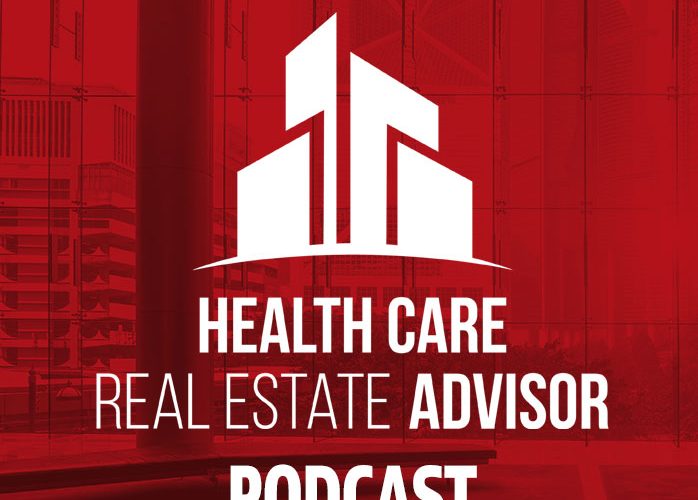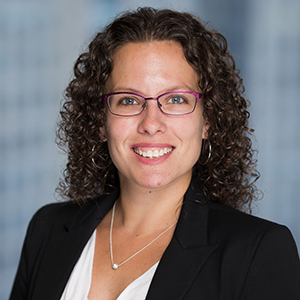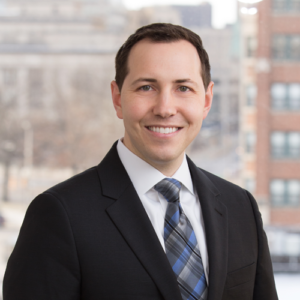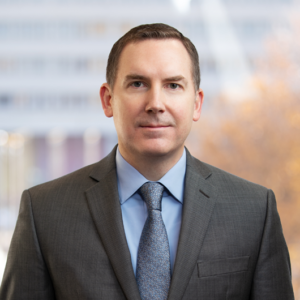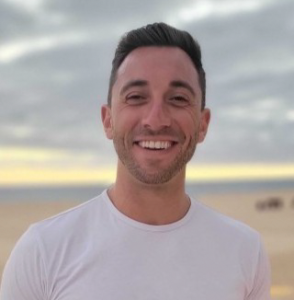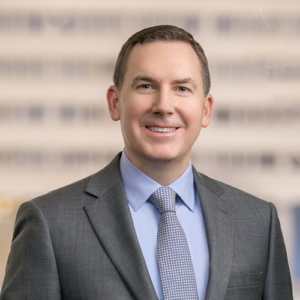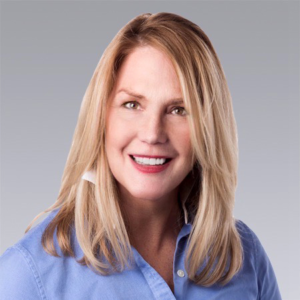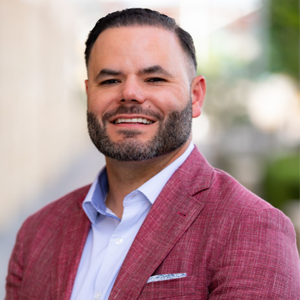The Life Cycle of On-Campus Hospital Ground Leases: Tips for Valuing, Negotiating and Managing Long-Term Leasing Arrangements
The Life Cycle of On-Campus Hospital Ground Leases: Tips for Valuing, Negotiating and Managing Long-Term Leasing Arrangements
On-campus hospital ground leases are among the most complex lease agreements to value, negotiate and manage for hospitals, investors and developers. In this webinar, Hall Render attorney Andrew Dick will lead a discussion on the history of on-campus ground leases and key considerations for hospitals when valuing, negotiating and administering long-term ground leases.
Podcast Participants
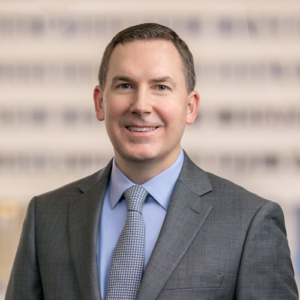
Andrew Dick
Attorney, Hall Render
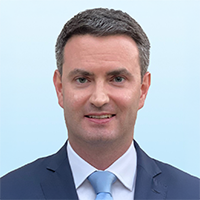
Justin Butler
Managing Director of Healthcare Valuation, Colliers

Mark Yagerlener
National Director of Real Estate Transactions, Medxcel
Andrew Dick: Thanks everyone for joining. I’m really excited about this webinar. It’s a topic that I think is of interest to not only the hospital systems that we work with daily, but also investors, developers, and other healthcare providers who are considering ground lease transactions. A couple months ago I was thinking about this topic because of all the work that I do at Hall Render, which is primarily real estate work for hospitals and healthcare providers. The topic of ground leases comes up quite a bit, and for those who don’t work for ground leases routinely, folks often have a lot of questions and they reach out and say, what is customary and how are these transactions structured and how do you get the parties comfortable with the terms? And I thought, Hey, wouldn’t it be fun just to have a webinar on this topic and have a dialogue around some of the benefits and challenges of ground lease transactions? And so a couple of weeks ago I reached out to Mark and Justin, my co-presenters and said, Hey, would you all be interested in this topic? And Bo said yes. So I want to thank Mark and Justin for joining me. I’ve known both of them for quite some time. And before we dive in, I want to have Mark and Justin introduce himself. So Mark, I’m going to turn it over to you first, why don’t you tell the audience about who you are and what you do every day?
Mark Yagerlener: Okay. Well thank you so much and I appreciate everybody joining this webinar and hat off to Hall render for hosting this. My name is Mark Yeager Leonard. I’m the National Director of real estate Transactions for MedExcel. MedExcel primarily supports Ascension Health with their facilities and real estate activities. I have the pleasure of supporting the Ascension MedExcel platform for almost 11 years. And prior to that I was with NAI Farman supporting their healthcare division. So I’ve been doing healthcare real estate now for, gosh, 25 years and I’m hooked. Wonderful. It’s a small world
Andrew Dick: And those of you who haven’t worked with Mark, he’s a pleasure to work with. Just a true professional, a gentleman. And so Mark, I’m thrilled that you’re willing to speak with us today. Justin, I’m going to turn it over to you. Why don’t you tell us about your background and what you’re doing for Colliers?
Justin Butler: Yeah, thanks Andy. I’m with Colliers, as you mentioned. I’m the managing director for healthcare valuation, so that’s, Colliers is a global real estate firm. I’m head of the healthcare real estate within the us. So we do appraisals really of kind of every asset type, but my focus has always been healthcare, hospitals, medical office buildings, surgery centers, behavioral health, really anything that falls underneath that umbrella. And we do that for loans, we do ’em for compliance, specifically sarc compliance, financial reporting, private equity groups, acquisitions, determination of ground leases, which is pertinent for this call and really anything that would fall under that healthcare umbrella.
Andrew Dick: Terrific. Thanks Justin. So a couple things before we dive in. We set this webinar up as a conversation. It’s going to be casual. We don’t have any slides, but we did prepare. We’ve got an outline, we’ve got a number of topics that we want to cover. We want it to be a free flowing discussion. If any of you listening have any questions, feel free in the q and a part of the Zoom that you can just send us a question and if we’re able to answer it online, we’ll do it. So feel free to just drop us a question and we’ll try to answer it as is. And then before we dive in, I want to put a plugin for some of the content that we produce. Our real estate service line is actively working on webinars you all may have seen over the last few weeks.
We’ve had a number of really interesting webinars, housing value-based care, those are available if you’re interested. Those usually show up a couple of weeks after they’re posted for on demand listening and on our podcast channel called the Healthcare Real Estate Advisor. And then Joel Schweider and I write a weekly real estate briefing that goes out every Monday morning. If you’re interested in that, follow us on LinkedIn or send us an email and we’ll add you to the email list. Okay, so let’s dive in ground leases. So what are they and why are they unique? In my experience, they’re unique because they’re a very long-term lease of land and oftentimes the term of these ground leases can run anywhere between 30 and a hundred years with extensions. The landowner often likes to retain ownership of the land but wants to turn over control to a complimentary user often on a hospital campus.
And so the lessee is often, whether it’s an investment group who wants to build a medical office building or a physician group or another healthcare provider will say, Hey, I think it makes sense for us to create this ecosystem on a hospital campus. One way to do it is the hospitals want to retain control of the land but allow another user on their campus. And the most common approach I’ve seen is a long-term ground lease. So Mark, when you look at long-term ground leases on the hospital campuses you’re working with, talk about some of the benefits and how you kind of view a ground lease arrangement and when does it make sense to offer up a ground lease to another provider or investor?
Mark Yagerlener: I have an opening thought before I get to that, which is from time to time I get comments from real estate brokers and developers expressing trepidation about doing a ground lease transaction versus just an outright fee simple transaction. And I mean literally these are very common all around the marketplace and I’m personally involved with literally dozens of ground leases. And to get to your question, Andrew, is what has to appreciate the hospital system has invested hundreds of millions of dollars in the hospital that’s on campus. I mean this days construction prices are easily well north of a million dollars to construct a hospital bed. And so there’s a considerable investment long-term investment that the hospital is making to that building to the ecosystem, the clinical ecosystem on that campus and for the other buildings. And so the benefits of a ground lease is it’s important for the hospital system to maintain long-term, long-term control and that’s control as to the quality of design, mostly on the exterior height restrictions so that the buildings compliment the hospital not detract from the hospital. And we certainly want to have some control and say over the long-term ownership and the different tendencies that would be in the building because obviously we wouldn’t want a competing healthcare system have a tenancy in a building that’s right there in the front door of our campus. So I’ll take a pause on that and see if you have any comments and questions.
Andrew Dick: Yeah, that’s a great observation. So Mark, talk about how does an organization like MedExcel decide when you have a hospital campus, you have some excess land, when do you decide to offer up some of that excess land for a complimentary use? What is the analysis like?
Mark Yagerlener: Yep, that’s a perfect question. So strategy needs to drive the business operations and so there will be a master plan for the hospital campus, just like municipality has a master plan for their community, we have a master plan for the campus and so that would identify footprints for future expansion of the hospital and what outlaws, if you will, on the hospital campus would be ripe for development. We’re looking at various ambulatory out of hospital type uses that would be complimentary. The one most common we see is physician led medical office buildings and physician led ambulatory surgical centers, especially as we’re seeing in this healthcare climate is a move from inpatient to outpatient procedures. The ASCs on campus are really well aligned to fit into that overall clinical ecosystem.
Andrew Dick: So how does that process work, mark? You’ve got this master plan and then how does it normally work? Do you all seek out interested parties who may be interested in your ecosystem you’re developing, so to speak for the campus or do you just field offers or how does that normally play out?
Mark Yagerlener: So another great question. So that’s driven in part by our hospital leadership and our strategy officers who identify what type of outpatient clinical uses. And there’s other uses too I’ll get to in a minute that would make sense. And we are either reaching out to physician groups or they’re reaching out to us with an interest that they’re looking to build an MOB and our reaction is, Hey, why don’t you build it on our campus? Let’s work through a ground lease for out lot number three.
Andrew Dick: Got it. One point I don’t want to overlook, I realize the long-term control is important Mark, but I also know that a number of, well almost all of the ministries I’m assuming within the Ascension network are their faith-based hospitals and health clinics. And a lot of times that land, I’m assuming, has certain protections so to speak, and you can’t just simply sell the land. And I don’t know if you’re able to talk about that just a little bit, but another reason that you want to maintain control is to really honor those ethical and religious directives that are so important to a Catholic faith-based ministry.
Mark Yagerlener: Yeah, I mean probably the most obvious one with the faith-based organization is not supporting having, for example, an abortion clinic situated on their hospital campus. And so that would be one example of underlying restrictions that we would use as an immediate filter as to the type of use. And I can say with the dozens and dozens of ground leases with ambulatory uses on our hospital campuses, that’s never really been an issue anyway.
Andrew Dick: Got it. Okay. Justin, I’m going to turn to you talk about from your perspective, what are the benefits to an organization that wants to build on campus with a ground lease model? How do you view them? How do the clients you’re working with view ground leases provide your perspective?
Justin Butler: Yeah, I mean to kind of touch on a few of the things Mark said, I mean I think from a healthcare perspective and a health system perspective, really unlike almost every other asset class that uses ground leases, they’re really not trying to maximize value. They’re not going to enter into a ground lease where they’re going to turn around and sell it to an investor. It really is a control situation. And when I say control, I mean a reasonable control. They’re not trying to control your building to the extent where it’s really not going to be feasible or control your day-to-day operations. They’re really just trying to make complimentary uses and make sure there’s no services that would essentially compete with the hospital or the other item Mike or Mark touched on. I think also from a campus benefit, I think a lot of municipalities may actually give some density benefits if you’re using a ground lease, whereas you may need a four acre parcel to build a 40,000 square foot MOB, but if the hospital wants to stick that MOB right next to the hospital connected, there may be some ability given the ground lease structure for them to structure that in a way that the municipality’s okay with it, they’re meeting the zoning requirements and it’s really kind of a win-win for both a developer or owner of the real estate as well as the health system.
Andrew Dick: Well, to pull that thread a little bit, Justin, how do ground lessees view the arrangement? I mean, one of the benefits that isn’t discussed enough is they don’t have to come out of pocket for the value of the land. Yes, there’s an ongoing rent obligation, but you’re not paying cash at closing. In my experience for the land, how is that viewed in the market and when you underwrite working through the financial analysis, how do you see it when you’re working with banks and investors? Is there an acknowledgement of that because in some cases the land is incredibly valuable and you don’t have that upfront 5 million cost, for example, that you have to factor into your pro forma. Talk a little bit about that.
Justin Butler: Yeah, I mean I think from a development perspective, you’re exactly right. I mean, that’s not an upfront cost. It’s often a cost that people have to, if you’re looking to develop a medical office building, it takes time. So you would have to go find a site, you would have to then acquire the site, you would then have to spend time holding site while you’re getting zoning approvals and permits and things like that. So you are saving some costs, not only upfront costs and purchasing the land that you don’t have to do under a ground lease scenario, but you’re also saving a lot of holding costs. I think also it’s definitely worth mentioning from a market standpoint and an on-campus MOB, I would say it would be highly, highly unusual for that on-campus MOB, true on-campus of a major medical center to not be on a ground lease. So I think the market capital markets both debt and equity acknowledge that, hey, this comes with the territory, we understand why the health system wants to do it, and most moobs that are going to be on campus are going to have this structure.
Andrew Dick: Got it. Mark, I’m going to go back to you really quickly here. We talked about ASCs, mobs, what else are you seeing on campus? Those have to be the primary too. What about the specialty hospitals or some other specialty clinics?
Mark Yagerlener: So you’ve hit the three of them specialty hospitals, but it’s other uses that benefit from the adjacency to a healthcare node. And one of those that we’re finding is senior living assisted living developments. One of their marketing positions is that bring your mom into this facility and oh, by the way, there’s a doctor 10 minutes away right here on campus. And so we have some very successful third party senior living facilities on our hospital campuses. And then for example, we’ve got a couple hotels because the mindset is you’re coming in for surgery or over more than an overnight stay and your family members want to stay there. And so we have some hotels who the average daily occupancy rate is at or above market level. And then last, but not certainly probably the less of the categories is retail, a coffee shop type thing, but we’re not looking to compete with the malls of the world. This is really a medical centric node of real estate activity and clinical activity.
Andrew Dick: Got it. Justin, talk a bit about the lease term. I know I mentioned that earlier that I’ve seen a broad range of lease terms of late, but I know that when investors look at these arrangements and when you’re valuing the leasehold, the lease term is really important. What are you seeing in the market?
Justin Butler: Yeah, I think, and I’m going to speak with options. So often when a ground lease is entered into, you may have a 30 year term, but you may have five 10 year options, you could have a 50 year term and 10 year options consecutively after that. I would say from a base term with options from the beginning, you’re probably looking at a 75 year life if you can extend it, A lot of the times I see a 50 year base term, but then with consecutive renewal options, normally at a continuation of the existing, maybe it’s 2% bumps or 10% bumps every five or 10 years or something along those lines, every once in a mile it’ll reset to market. But I think from a normal investor holding period, you want to at least consider the life of that building. So for example, if you only had a 30 year ground lease, we would say a building would probably last at least 50 years.
Essentially you only have a 30 year ground lease of a building that you’ve built or purchased that in 30 years there’s going to be 20 years left of life of that building and you’re just going to have to give it back to the groundless or barring any other sort of negotiation. So I would say at a minimum you want to look for at least the term of the economic life of the building. And then after that I would just get into extension options. If I were investing in real estate in a ground lease, I would prefer the extension options because it kind of gives you the choice. Things change. I mean, what is real estate going to look like in 50 years? Maybe it’s time to build a new building, maybe the hospital wants it, who knows? But having that option at the groundless source. So really the building owners, right, the ability to continue to exercise those options protects them, but also gives them some flexibility.
Andrew Dick: Got it. Mark, what are you seeing in the market? I think Justin’s right, it’s consistent with what I’ve seen that a lot of the lessees want a minimum of maybe a 50 year initial term and with extensions, but I’ve had some hospital clients say they want to put a not to exceed 75 or a hundred years or what have you seen in the market and what are your thoughts on this topic?
Mark Yagerlener: Well, I mean usually I think building off of Justin’s comment, I mean starting point is usually 50 years because one of the other drivers to that will be is the lender on the real estate for that user, the lessor lessee is going to look for enough residual term after the node expires. So 50 years, I think for some of the more substantial developments, we end up being in that 60 to 70 year slot of time period on a lease with the extensions and they’re automatic extensions on part of the last C.
Andrew Dick: Got it. Okay. We talked a little bit about use restrictions. Mark, you talked about making sure there are no competitors. What about purchase options does? What are you seeing in the market in terms of does the landowner often the hospital system, do they want to write a first offer or write a first refusal or just a write out purchase option at certain points in time? What have you seen?
Mark Yagerlener: So definitely write a first offer and refusal on it. The interesting part is in my tenure here, I think I’ve only seen two groundless source transfer their real estate, and that was really through a function of one REIT transferring assets to another reit. So other than that, just freestanding investors, these parcels, they do not change hands, but if they’re going to sell, we need to at least have some period of time that the hospital system can have the right to say, Hey, we want to buy that or perhaps assign our right to another party so that we make sure that the use of that building aligns with that term. I keep using the clinical ecosystem for the hospital campus, which is first and foremost, the most important focus for us.
Andrew Dick: Makes sense. Justin, I’m going to turn it over to you. Let’s talk about valuation a little bit. In my experience, there’s been a wide range of valuation when it comes to ground leases, and one of the reasons I was excited to have you on is because you’ve done a lot of this kind of work in finding the right valuation professional is really important because in my experience, there aren’t a lot of appraisers that do this kind of work in the healthcare industry. And maybe you could talk about how do you approach a ground lease valuation because it’s a different kind of leasehold than a space lease or something like that. It’s just very different how do you approach it?
Justin Butler: Yeah. I just want to touch on something Mark said because you mentioned purchase options and there are, so we have right of first refusals, which is essentially you have a right to purchase under a market transaction, write a first offer, which would be the owner of the building, going to the health system and saying, Hey, we’re going to bring this to market. Do you want to make the first offer? And if we like it, we won’t even bring it to market we’ll close. I think those are generally pretty acceptable as long as they’re not right of first refusal at 95% of the offer or something. I think where you’re really going to get into some trouble from a real estate owner, from the building owner is going to be a purchase option because really we talked about earlier, the 50 year base term, let’s try to get it to 75 years with options.
That’s really because of the life of the building, but also investment horizons. So people are going to buy a building, they’re not looking to sell it next year. Normally they’re going to look for a typical holding period. So let’s say on average five years, during that five years or let’s say shortly thereafter where it would affect that future sale, so maybe seven years. So in five years when you’re looking to sell, the health system has a purchase option two years after that. If that’s the case, I think that’s going to cause a lot of challenges both in the capital markets, both equity and debt investment in that building. So I think those are kind of very important to distinguish. But back to your question on the determination of ground leases, I’ll put it very simply. We determine the value of the land and we apply sort of a rent yield to that land.
So let’s say it’s a million dollar piece of land, we apply a 7% rent yield, that’s an initial rent of $70,000, and then it’ll go up from there depending on escalations. And that sounds very easy, but I think some of the challenges that often arise is at least 5, 6, 7 times out of 10, the ground lease is normally an apron. It’s the building footprint plus an apron. So you’re dealing with a very small site that doesn’t incorporate really the whole economic utility of that building. So what we do in those instances is we really say, okay, this is the site, it’s the footprint of the building plus a small apron, which may be 20, 30,000 square feet for a 80,000 square foot building. And what we then do is we look at floor area ratios of off campus buildings to really kind of determine what is really necessary.
We’re using the drives, we’re using the surface parking, we’re using a whole bunch of other zoning requirements that like I mentioned earlier, that may require certain setbacks or lot areas. So we then determine the economic site under that scenario where it is an apron and then or at least what we would term the economic site. And then we determine the value of that normally on a per square foot per acre basis, normally per square foot in these instances and then apply the rent yield to that. So that’s kind of the basis. I think the back of napkin math we also do, which I think is important, is okay, if they’re building a 70,000 square foot building and my rent is X, what does that equate to per square foot? And I see a lot of low end, maybe 50, 75 cents per square foot of the building to maybe three bucks a square foot of the building. But if you get into numbers where it’s like $8 a square foot of building area, you’re really hurting that building. And there’s probably some questions on how you got to that math unless it’s exorbitantly valuable land.
Andrew Dick: So hurting it in what way, Justin? The operating cost end up getting outside of what is market and makes that building not as competitive in terms of lease up, is that what you’re saying?
Justin Butler: Yeah, the downside is more significant because if you think about a hundred percent occupied building sometimes, and I would say more often recently, for example, if it’s a single tenant building, the health system may even get a developer to build a single tenant building. The single tenant is the health system. So they’re entering into this ground lease, they want to control their campus, they determine a ground rent, but then they also reimbursement reimbursement through their lease. That’s fine. And everything works until that tenant leaves. And instead of just having the holding cost of the building, you now have the holding cost of the building plus $8 a square foot, which is pretty significant and it hurts during the downtime. It also will just bring the valuation, the rents in that building if they’re not reimbursed, need to be very high to support an $8 a square foot. So I don’t often see that. I think that’s really why we check though back in napkin. And there are some instances where there’s an explanation for it and maybe it is an under utilization of the site. Maybe you’re building a one story 12,000 square foot ambulatory surgery center in the middle of a very dense campus. And then that may bring up some other questions as far as, okay, the land’s worth a lot, but you’re really not maximizing this site from a development standpoint.
Andrew Dick:You hit on a number of really important points there. The economic site, as you called it, oftentimes when I work on these deals, so a de novo, MOB or specialty hospital, the investor or lessie, they just want to pay rent in their words on the footprint plus an apron. But you’re exactly right that there’s this, it takes more than just the footprint to make that project viable, whether it’s setbacks and other things. If you were to build that MOB for example, or specialty hospital off campus free standing, you’d probably need a couple more acres often just for example, to support that project. And so you have to factor that in. So I’m glad you mentioned that, mark. I’m going to turn it back over to you on the valuation piece. How carefully are you all monitoring looking at the valuation of these sites? If you’re a tenant for example, like in Justin’s example, master lease or maybe you’re 50% of an MOB, are you looking hard at those operating costs that get passed through to you?
Mark Yagerlener: We very much are, and certainly there’s an advantage to having an on-campus MOB, both from the tenant’s perspective, from the physician’s convenience and access to other critical medical resources, especially if they’re a surgeon or they’re seeing patients within the hospital. But there’s also that critical density from a developer landlord’s perspective of it’s convenient for patients because they may be coming to this building because it’s internal medicine and they also have an appointment with a podiatrist or what have you. But ultimately the economics make sense. I mean, certainly there’s an economic advantage to being on campus, but you just can’t assume that there’s going to be a X exorbitant premium just because you’re on campus. We’re competing with the other medical office buildings that are sort of out in that first tier of the solar system around the hospital campus. And I’m always critically aware that physicians are monitoring the cost of doing business. So I’m looking at that. And then I wanted to just build on Justin’s your comment about valuing the ground leases. One of the other components that we look at extremely carefully is more than likely one of the parties to that transaction is a physician. And so as a physician referral, we have to make sure, and your organization does a great job doing the comps with the ground leases, is making sure that the economics with the ground lease are consistent with the compliance standards that we have to follow.
Andrew Dick: Well, Justin, I want to ask you another question. When I first started doing ground lease deals many years ago, I realized that the folks like you that are valuing the leasehold approach the analysis, there’s a risk analysis, and when you value whether you’re applying a rent factor that’s truly market well market’s often driven by what is the risk profile. So if one of a hospital system enters into a ground lease with a developer for a medical office building, in my experience, the risk profiles often pretty low that the lessees going to default or fail to pay rent because in many cases, not all, but in many cases if they don’t pay rent, there could be a default and the improvements revert to the landowner the hospital. Is that factored in to the analysis? I think it is, but talk a little bit about that, the risk profile.
Justin Butler: Yeah, yeah, good question. I mean, when we do this, and I kind of mentioned earlier a hospital, I’ve never seen a hospital enter into a ground lease and then sell that ground lease. So the ground lease yield is really, in my eyes, it’s kind of determined by looking at ground lease cap rates. So you’re not going to get a ground lease, which is the return that an investor is willing to pay on the rent that that ground lease is making. So you’re not ever really going to find any ground lease capitalization rates of on-campus mobs because the health systems aren’t selling, there isn’t a market they’re entering into them really for the control side of things. So the next best thing to kind of look at, and there’s a ton of ’em, are sort of these retail ground leases that are out there. So think about Taco Bell, McDonald’s, A lot of developers will enter into those.
They’ll sell ’em to, there’s ground lease REITs, private equity groups, ground lease investors, and then that’s sort of our base sort of capitalization rate. But you got to think that that developer, in order to make a profit, he’s not going to enter into a ground lease at 6% and then sell it for 6%. He’s not going to make any money off that. So you enter into it let’s say at 7% rent yield, and then you get a 6% return is what an investor may be willing to pay, and you kind of keep that spread. So we look at these retail ground leases, which number one are normally shorter, especially considering options, and number two, they’re riskier because retail it comes and goes pretty quick. It’s not going to have the same lifespan as an on-campus medical office building. So that’s kind of at least from my appraisal kind of side of things, how I judge risk, where are we going to fall on that yield, that cap rate range, and we generally defer to the lower end of the range, which would infer a really a lower risk profile.
Andrew Dick: That’s important because Justin, when I’ve worked with some appraisers who maybe don’t do this as much, they one struggle to find comps and two, I don’t think they fully appreciate what you just described if you’re not doing this every day. Well, let’s pivot really quick to a different approach on the valuation piece. Oftentimes when I’m working with the hospital systems, for example, maybe they’re doing a ground lease transaction with a physician group or a developer, and inevitably you’re near the end of the negotiation process and the lessee developer or a physician group will say, well, you know what? You’ve put so many restrictions in this ground lease. I’m going back to the appraiser because I want the appraiser to weigh in to see does all of the restrictions that have been baked into the documents impact the value? Talk a bit about that if you’re able, how does that come into play, whether it’s use restrictions or something like that, and how do you respond when you get those kind of questions? Are you Sorry, I’ll let Mark follow it up.
Mark Yagerlener: Go Mark. I was hoping you were. I was
Andrew Dick: Hoping you were.
Mark Yagerlener: We know each other too well. So I think fundamentally the responsibility falls with the hospital real estate department folks like us to lay out upfront what those restrictions are going to be. I mean, we may not have a hundred percent of them covered, but the material types of restrictions that we’re going to have should be through the Covet ccrs that we would have, which usually those documents already exist. So that’s I would say statement number one. Statement number two is just as a matter of principle, I don’t appraisal shop, so if the party wants to get another appraisal, they’re welcome to and I’ll look at it, but I’ve put my faith in the appraiser that we’ve commissioned to come up with the value unless there’s something materially that has changed and that would change the outcome of the transaction
Andrew Dick: Well before Justin. That’s perfect. Mark, you teed up. One of the points I wanted to make is because ground lease transactions are complicated, getting everything out upfront, whether it’s through an LOI or term sheet and delivering, whether it’s cc and Rs, make sure the lessee knows what they’re getting into so that there’s no surprises late in the game. Justin, why don’t you chime in. Do you assume when you value an on-campus ground lease that there’re going to be restrictions? Do you have to get into the minutiae of those restrictions or when you get questions, how do you approach them?
Justin Butler: Yeah, I would definitely say, I mean, we assume the normal, and I think everyone on this call will probably have a different idea of what normal is, but what I would describe as normal is if you’re on the campus of a health system, I’d start with from a use restriction standpoint that the people who are going to be in your MLB normally the very bare bones basic restriction is that they will have admitting privileges at your hospital. That’s kind of like the first one. Then the next one is they’re going to probably start looking at competing services. So you’re not going to want that cancer center next to you in the MOB, especially if you’re providing cancer services. You’re not going to want a surgery center in that MOB. You’re not going to want things that are specifically going to compete with your health system.
I think where, and I’ve seen them oftentimes where it kind of gets pretty tough from an ownership and from a development standpoint is where everything under the sun, every specialty, everything you can possibly think of is essentially a use restriction. And I’ll caveat that that doesn’t necessarily mean that they can’t have that in the medical office building. It just needs to be approved by the health system is normally the language I would see if it’s not specifically like a cancer center or something like that. But what that I’ve seen a lot of times recently where it’s caused issues where a health system may say, no, I don’t want them in there. And you’re like, well, this is an orthopedic group, they’re going to utilize your hospital. And they’re like, well, I just don’t want ’em in there. And I think that becomes a challenge because there’s a lot of marketing dollars, there’s a lot of leasing dollars, there’s a lot of things that build out potential dollars, architectural planning, ownership of these buildings that if you’re really, really, really restricting the uses, it’s going to be onerous and a challenge on the owner from a initial sort of ground lease determination.
I do kind of assume sort of the normal stuff like admitting privileges, no A SC, no cancer. If it gets more onerous, I think the question is maybe not for the appraiser, but it’s to the developer as to why do you still want to build this building? Then don’t kick it back to the appraiser and say, Hey, you should just lower the value here because we have all these restrictions. Well, you’re still motivated to build the building and there’s still something good about this site that’s valuable to you that you’re willing to build the building if they get overly onerous. I mean, yeah, we probably would have to consider that. I think that is, to be very honest, it’s very challenging to quantify what that would be.
Andrew Dick: Got it. We’ve got a number of questions, which is good. Justin, I’m going to go to you first. We talked about the economic site factoring in not just the footprint, if it’s a footprint style ground lease, which many, many ground leases are set up that way so that the hospital system can maximize land and do other things around the building. What about parking? Do you factor that in or if there’s a separate parking agreement or is it valued separately? How do you handle that? And then I’ll ask Mark the same question.
Justin Butler: I leave it up to the lawyers. No, I’m just,
Andrew Dick: That’s scary.
Justin Butler: No, I think the big one, I mean are obviously you need easements that both parking and access really on an island most of the time I was describing earlier. I think the big one is garage parking. I mean garages are pretty reasonably expensive when you’re looking at ’em from a per square foot kind of build or a space analysis. So what we normally do if there is like, Hey, here’s our site, you can do your normal analysis, but by the way, they’re also getting a hundred garage spaces. We will go in there and if it’s a new garage, we’ll look at what the per space costs of a new garages and kind of calculate that into our, if you remember that sort of base value. So if we came to an economic site value, we’ll look at, hey, what does it cost? What’s sort of the replacement cost per space here? And if it’s a really old garage, we may look at the depreciated, but that goes into our base and then we apply the rent yield onto that. So if there are some major costly things that are involved, if they’re building a whole new entrance and things like that, we would start to consider those extra costs.
Andrew Dick: Got it. Mark, how do you see it? Do you have separate parking agreements? Is the parking kind of accounted for in the ground lease value? What have you seen?
Mark Yagerlener: So just building on what Justin said, I think it sort of fundamentally, if it’s an urban campus, let me take it from the other direction. If it’s a more typical suburban campus that ground lease may more than likely just be its own standalone out lot and there’s going to be parking on that out lot and just following the zoning requirements, there’s five spaces per thousand square feet or whatever the requirement is, and so that is factored into that ground lease parcel. If it’s a more urban densely developed campus, back to Justin’s point, there may be some shared parking or cross parking easements and then the value of that would need to be figured into the ground lease and is figured in.
Andrew Dick: Got it. Okay. Let’s talk about, because I get a lot of questions around escalators. Justin, you hit on this at a very high level early on, what do you see in terms of ground leases are a little different. Sometimes there’s a fixed period of years where rent stays the same, then there’s a catch up based on whether a fixed percentage or CPI increases. In other cases for the period of five years, there’s a certain annual escalator. What have you seen?
Justin Butler: I mean, I’ve seen almost everything, right? So CPI can be used, which is just the consumer price index. I’m sure everyone on the call has seen it in leases. We’ll see situations where it’s a fixed two, 3% annually. We’ve seen a situation where maybe it’s a five or 10 year increment in which it will increase that 10% or 15% or 7% or another fixed number just on a longer interval. We’ve seen instances where it does even reset to market At some point we will do 10 years and then we’re going to get another FMV. I think from an investment standpoint, I don’t see that often, but I have seen it. But from an investment standpoint, that’s really challenging again, from a building owner perspective because ultimately economic markets, they’re going to be stable as long as you can sort of guess how the future’s going to be and if you leave it up to, I mean even CPI can get risky given the past few years, but if you leave it up to a fair market valuation, every 10 or 2020, whatever it may be, all your numbers, all your underwriting can change.
So I’ve seen one of the more common ones I’ve seen recently, which kind of contradicts a little bit of what we were talking about early on in the call. There’s instances where developers are like, I don’t really want to pay anything. I may want to be on a ground lease. I can’t pay you zero. How about I pay an upfront payment? And that upfront payment is really if we determine market the same way I just kind of ran through, it’s really a net present value of those future payments is how you would figure that upfront payment developer pays it. The ground lease, it’s normally like a buck a year after that, but it relieves any future stress and especially on the items that I talked about in moments of vacancy, if you’re not paying anything and the developer paid it up front like he was just developing a normal off-campus, non on ground lease building. But yeah, really, I mean people can get creative and I think mean the way I view market is there’s always sort of a basis for that market, but if you want 5% escalations every year, then maybe that initial rents going to be a lot lower and we kind of look at the net present value of those future payments and what they should be under a market scenario to sort of calculate those payments.
Andrew Dick: Got it. Mark, any observations?
Mark Yagerlener: Well, just adding to what you said Justin, is from both the lessor and the lessees perspective, I would prefer a fixed escalator versus CPI, just from a predictability from a hospital perspective, I want to know what the revenue stream’s going to be, and as the lessee developer, I’m going to want to know what my expenses are going to be. I’ve seen a couple of, not very rarely as instances where the less lessee has done the paid upfront, the discounted value of X term of the lease. I think I’ve seen a couple of those. By and large, I think they’re avoiding that out-of-pocket upfront expense and spreading it over the term of the lease.
Andrew Dick: Got it. We’re getting near end of time, but we got a number of questions and I’m going to try to boil these down into a couple categories. This is a question I get a lot is well, so the lessees will often ask me or the hospital system, Hey, I’m going to build this MOB 70,000 square foot, I think was an example we’ve talked about at the end of the ground lease hospital, you’re getting the value of that building. How is that taken into account? In other words, the residual value. And one point we often negotiate is whether or not they actually have to return the land with the building and what is its economic life. I think Justin talked about that in some cases they don’t have to return the building to us, they can just remove the building if at some point it’s economic life is gone. But maybe you all could talk about Mark from your perspective, is there an expectation that you’re getting a building for free at the end? And I often kind of chuckle at that because the economic life of a building is usually not a hundred years.
Mark Yagerlener: I mean the hospital’s goal is not, our binoculars are set on, oh, what’s the residual value that we’re going to get in 62 years from now? So that is not the driver for us in these, but under a function of a ground lease that the real estate built on that land would revert back to the lessor.
Andrew Dick: Yeah. Justin, any observation on residual value? I get this question and I think it’s so hard to predict what will happen at the end of a ground lease, whether the building’s there and even if it has any functional use at that point. I mean, I’ve worked on one in the east coast recently where the building wasn’t upgraded over years and it’s just functionally obsolete. It has almost no value or a negative value. What’s your take on this?
Justin Butler: Yeah, I would agree with your comments. I mean, I think that’s to tie back in with what I was saying earlier. I mean we’re really looking at economic life of the building, which can be extended, right? So I mean you build a building, I mean you figure it’ll last 45 to 55 years. You can extend that by renovating and exterior and interior, redoing the systems, doing lots of things, great repairs and maintenance program. But I think what you want to be, what an owner of the building should want to be able to do is to be able to have those options in their back pocket. So by the time they would give up the building, essentially that should kind of be their choice. And there probably isn’t much value in that building. And I mean 50 years, 75 years away, I mean we’re going to have completely different building systems and it is going to be an obsolete building that’s probably not worth much.
Andrew Dick: Got it. Okay. We’ve only got a couple more minutes left. A number of questions here about purchase options. Going back to something we talked about initially, we covered rights of first offer, rights of first refusal, but I think these questions are really around the hospital’s unilateral right to buy out the lessee and buy the improvements. And the questions are around how often are those structured and are there set points in time if they are granted by the lessee so that developers, so to speak, if they are willing to give the hospital the right to buy them out, what do those purchase options look like? Justin, I’ll start with you and then we’ll go to Mark. I know these are very hard to negotiate. Oftentimes a ground lessee will say, I’m not even interested in doing that. But if they are, are there set points in time and is it fair value or is it a return on their investment? What are you seeing?
Justin Butler: Yeah, that’s actually a good point. The last comment you made there, I was going to always, I would naturally have defaulted to the fair value. That’s what I see the most. And I’m not going to speak against my, but I think you said earlier, not all appraisers are created alike. So the challenge with purchase options is that you’re really leaving it into someone else’s hands. Your asset that you purchase, what you think the value is, how you value the income stream. You may have some tax benefits, for example, if you’re in California with Prop 13 that you’re making a very nice income stream, but the market value may not be there because that’s going to reset if you were to sell it. So I mean, I don’t know, it’s a tough, I guess call on the purchase options. I mean, I think they’re definitely going to hurt the owner and I’ve seen 95% of market value.
And again, it’s just going to go to their investment horizons. And if someone’s like, I would really like to hold this for 10 years, I’m putting together assets, I’d like to sell a portfolio one day, and you buy it and then two years later the health system says, Hey, we’d like to buy the property and we’re going to go through a fair market value exercise. We’re going to get two appraisers. If they’re too far apart, we’re going to go with the third. That’s a really stressful situation because I’ve been apart a lot of ’em. And some people can really lose their shirt. Both the health system or the owner of the building can lose their shirt in that scenario.
Andrew Dick: Got it. Mark, any observations? How important are these? No,
Mark Yagerlener: I was think the same thing, but you get your appraiser, I get my appraiser, and then we bring someone else to opine on it and it can be a very contentious process. I’ve not been party to one on a ground lease. I’ve been obviously party to purchase options on just straight out fee simple buildings, but not on a ground lease.
Andrew Dick: Got it. Yeah, they’re harder and harder to negotiate anymore. I think the rights of first offer and refusal are more common because it leaves control of sale with the lessee. Well, I know we’re almost out of time. Mark, any closing remarks?
Mark Yagerlener: Oh gosh. I respectful that there’s a hundred people that opted to stay in for this whole hour on ground leases. I think it’s a good tool out there to facilitate development on hospital campuses that is both supportive to the physicians and also supportive to the hospital system.
Andrew Dick: Got it. Justin?
Justin Butler: Yeah, to echo Mark, I mean thanks everyone and thanks Sandy for the invite. I think time flew by, so that normally means we’re having a good time. I think this is just another really ground leases specifically under the healthcare side is just another really good example of why the healthcare real estate market is a very unique market. I think the structures around ground leases within the healthcare field is unlike retail, unlike industrial, unlike any other class. And the motivations are very different. So as we touched on in the beginning, I mean I think it’s important to understand those motivations and the nuances that surround them.
Andrew Dick: Terrific. Well, I think you both, I thank everyone for joining us. If anyone’s interested, I’m going to send around a checklist for ground leases. Feel free to drop me an email, a really simple checklist of some of the things we’ve covered. And then to the extent we didn’t get to any of the questions, I’ll try to email some of these folks offline to see if they want to chat about any of the questions they’ve got. And Justin, mark and I will be glad to field any questions to the extent we’re able offline. But again, appreciate the audience signing up and thank you.

